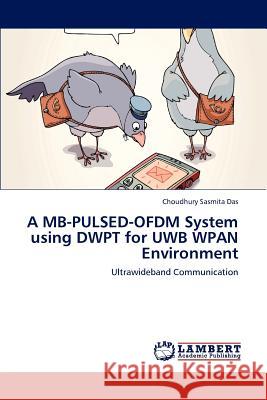A MB-Pulsed-Ofdm System Using Dwpt for Uwb Wpan Environment » książka
A MB-Pulsed-Ofdm System Using Dwpt for Uwb Wpan Environment
ISBN-13: 9783659163616 / Angielski / Miękka / 2012 / 80 str.
Multiband Orthogonal Frequency Division Multiplexing (MB-OFDM) approach using UWB signals with short duration of pulses provide unique advantages in short-range high data rate WPAN physical layer applications, which include easy penetration through obstacles, high precision ranging and low processing power. Non-pulsed MB-OFDM system suffers from the frequency selectivity of the fading channels. MB-pulsed-OFDM is used eliminate heavy error correction coding for dense multipath frequency selective channel model. The IFFT module in the pulsed-OFDM transmitter is much less complex than the IFFT module in the normal OFDM because MB-pulsed-OFDM uses 32 subcarriers while normal MB-OFDM uses 128 sub-carriers. Each subcarrier has large side-lobes, requiring careful filtering and sufficient guard interval bands in a traditional MB-OFDM UWB system. Again Fourier based MB-OFDM signals only overlap in frequency domain. To overcome these aforementioned problems associated with MB-OFDM UWB system, a finer and adjustable resolution of frequencies at high frequency is presented as wavelet basbased transform technique i.e. discrete wavelet packets transform (DWPT) instead of using FFT.jai jagannath
Multiband Orthogonal Frequency Division Multiplexing (MB-OFDM) approach using UWB signals with short duration of pulses provide unique advantages in short-range high data rate WPAN physical layer applications, which include easy penetration through obstacles, high precision ranging and low processing power. Non-pulsed MB-OFDM system suffers from the frequency selectivity of the fading channels. MB-pulsed-OFDM is used eliminate heavy error correction coding for dense multipath frequency selective channel model. The IFFT module in the pulsed-OFDM transmitter is much less complex than the IFFT module in the normal OFDM because MB-pulsed-OFDM uses 32 subcarriers while normal MB-OFDM uses 128 sub-carriers. Each subcarrier has large side-lobes, requiring careful filtering and sufficient guard interval bands in a traditional MB-OFDM UWB system. Again Fourier based MB-OFDM signals only overlap in frequency domain. To overcome these aforementioned problems associated with MB-OFDM UWB system, a finer and adjustable resolution of frequencies at high frequency is presented as wavelet basbased transform technique i.e. discrete wavelet packets transform (DWPT) instead of using FFT.jai jagannath











